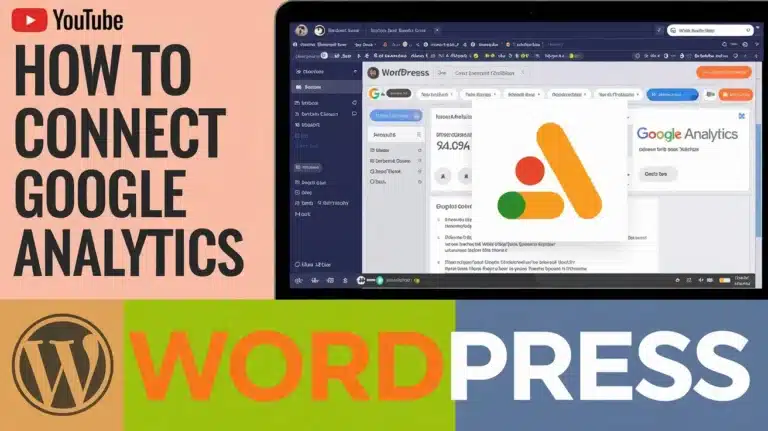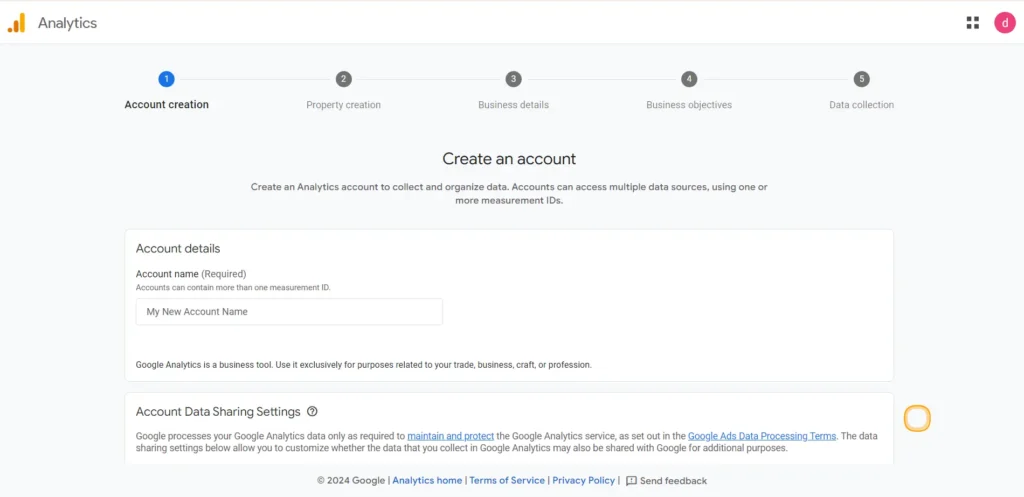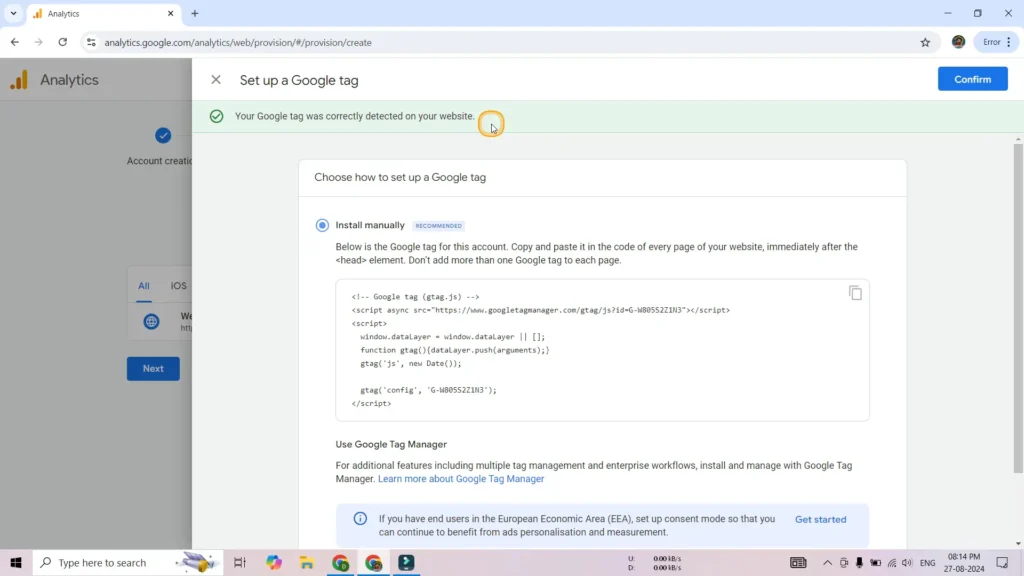Connect Google Analytics to WordPress to start tracking your website’s traffic and user behavior effectively. Google Analytics is a must-have tool for anyone looking to understand how visitors interact with their website. Whether you’re running a blog, an eCommerce site, or a portfolio, Google Analytics helps you monitor key data like page views, user demographics, and much more. In this guide, we’ll show you how to connect Google Analytics to your WordPress website in just a few simple steps.
📜Table of Contents
❓Why You Need Google Analytics
Google Analytics gives you the power to make data-driven decisions for your website. You can see where your traffic is coming from, which pages are most popular, and even how long visitors stay on your site. This information is crucial for improving your content and boosting your website’s performance.
⚙️Step 1: Create a Google Analytics Account
- Go to Google Analytics: Visit Google Analytics and sign in with your Google account. If you don’t have one, you’ll need to create one.
- Set Up a New Account: Click on the “Start measuring” button and enter your account name. You can name it after your website or business.
- Create a Property: A property represents your website in Google Analytics. Enter your website’s name, URL, and select your industry and time zone.
- Get Your Tracking ID: After setting up your property, you’ll get a unique tracking ID. This ID is what you’ll use to connect Google Analytics to your WordPress site.
⚙️Step 2: Add Google Analytics to WordPress
Now that you have your tracking ID, you can connect Google Analytics to WordPress in a few different ways:
➤Option 1: Using a Plugin
- Install a Google Analytics Plugin: Go to your WordPress dashboard, navigate to Plugins > Add New, and search for a Google Analytics plugin like “MonsterInsights” or “Site Kit by Google.”
- Activate and Set Up the Plugin: Install and activate the plugin. Follow the setup wizard to connect your Google Analytics account. You’ll need to paste your tracking ID when prompted.
➤Option 2: Adding the Code Manually
- Copy the Tracking Code: Go back to your Google Analytics account, and under the “Admin” section, find your tracking code.
- Add the Code to Your Header: In WordPress, go to Appearance > Theme Editor. Find the
header.phpfile and paste the tracking code just before the closing</head>tag. Be careful with this method, as editing theme files directly can be risky if you’re not familiar with coding.
⚙️Step 3: Verify the Connection
Once you’ve added the tracking ID to your WordPress site, it’s important to verify that Google Analytics is working correctly.
- Visit Your Website: Open your website in a new tab.
- Check Google Analytics: Go back to Google Analytics and navigate to the “Real-Time” section. If everything is set up correctly, you should see your live website traffic.
🚀Advantages of Connecting Google Analytics to WordPress
Connecting Google Analytics to WordPress offers several benefits that can significantly enhance your website’s performance and strategy. Here are some key advantages:
- Insightful Traffic Analysis: By connecting Google Analytics to WordPress, you gain access to detailed reports about your website’s traffic. This includes data on the number of visitors, their geographical locations, and the sources of their visits. Understanding these aspects helps you tailor your content and marketing strategies to better meet your audience’s needs.
- Improved User Experience: Google Analytics provides insights into how users interact with your site. You can track which pages are most popular, how long visitors stay, and where they drop off. This information allows you to identify and address areas where users may be experiencing difficulties, leading to a more intuitive and enjoyable browsing experience.
- Enhanced SEO Strategies: With Google Analytics, you can monitor the performance of your SEO efforts. By analyzing which keywords and search queries drive traffic to your site, you can refine your SEO strategies to improve your rankings and attract more organic traffic.
- Better Content Planning: Knowing which content resonates most with your audience helps you make informed decisions about future content creation. You can focus on topics that generate the most engagement and align with your audience’s interests.
- Data-Driven Decision Making: Google Analytics empowers you to make decisions based on actual data rather than guesswork. Whether you’re assessing the effectiveness of a marketing campaign or evaluating website changes, having accurate data at your disposal leads to more effective and strategic decisions.
- Goal Tracking and Conversion Monitoring: By setting up goals in Google Analytics, you can track specific actions that visitors take on your site, such as signing up for a newsletter or completing a purchase. Monitoring these conversions helps you measure the success of your website’s objectives and make necessary adjustments to achieve better results.
- Integration with Other Tools: Google Analytics integrates seamlessly with other tools and platforms, such as Google Ads and Search Console. This integration allows for comprehensive tracking and analysis across various aspects of your online presence, providing a holistic view of your digital marketing efforts.
🎯Conclusion
Congratulations! You’ve successfully connected Google Analytics to your WordPress website. Now you can start tracking your visitors, understanding their behavior, and making informed decisions to grow your site. Regularly check your Google Analytics dashboard to stay on top of your website’s performance.


